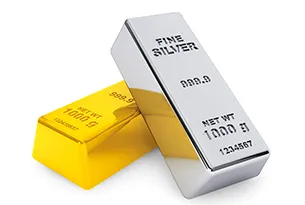Traders who use covered calls can realize much higher income potential without taking on excessive risk, as shown by these three popular strategies, all of which are working well in the current market environment.
There are at least three covered call strategies that are popular today:
- A replacement for lower-yielding investments (cash, bonds)
- A way to generate extra income from stocks you already own
- More frequent trading doing short-term buy-writes
Let’s look at how covered calls apply to each of these strategies.
Replacement for Lower-Yielding Investments
Cash and highly-rated government bonds are safe, but in today’s low-interest world, they pay almost nothing. Very hard to live on 2% annual yield, even if you have a sizable nest egg.
By transferring some of your "almost risk-free"assets into the "some equity risk but still pretty safe" category, you can increase your annual yield from 2% to at least 6%, and probably more like 10%. By writing deep-in-the-money calls on large-cap, blue chip stocks, you can get better yields than what bonds pay.
Here are examples for JPMorgan Chase (JPM), Ford (F), and the Dow Jones Index (DOW):
With downside protection of 20% or more, only 43 days to expiration, and no earnings announcements before expiration, it is likely that these will be called away at expiration. If they are, then you make significantly more than the 2%/year annualized return that cash or bonds pay, while taking little equity risk.
NEXT: Earn Income from Stocks you Aleady Own
|pagebreak|Extra Income from Stocks You Already Own
You’re already taking the equity risk by holding the stocks, so why not get some extra income from them by selling covered calls? Even if you sell short-term call options that are 5% or 10% out of the money, you could increase your annual yield by several percentage points.
See related: The Basics of Writing Covered Calls
For example, say you wanted to leave yourself 10% upside potential (meaning you don’t want to lose your stocks unless they appreciate by more than 10% between today and option expiration), you could sell these covered calls, which are all 10% out of the money.
Using the same stocks from above, here are some examples:
Yes, those premiums are pretty small, but it’s "found money," and each of those has 10% or more of upside potential on the underlying stock (since you already own them, it is assumed you are bullish on the stock).
The options yield over 10%/year in call premium income. You’ll just need to make sure you have enough shares so that the transaction costs don’t take up all the profit. Why not earn an extra 10% from stocks you already own? No additional equity risk.
Covered Call Strategies for Frequent Traders
One of the most popular covered call strategies is to buy stock expressly for the purpose of selling calls against it (known as a ’”buy-write” strategy). Usually, these kinds of investors sell in-the-money options and they’re hoping to be called out of most of their positions on option expiration day.
They’re probably trading short-term options, including weeklies. The conservative way to do this strategy is to find stocks that pay well for deep-in-the-money covered calls, hopefully short term and without any earnings announcements before expiration.
Here are a few examples using Citigroup (C), Las Vegas Sands (LVS), and Apple, Inc. (AAPL):
All of those have decent downside protection and still yield over 19% annualized return. The strategy would be to have them all called away at expiration on November 19 and then choose new stocks for the December cycle.
Trading Conclusion
So there you have it: three covered call strategies that all pay better than cash or bonds and are all relatively safe. Certainly less risky than a straight buy-and-hold strategy.
By Mike Scanlin of BornToSell.com






































